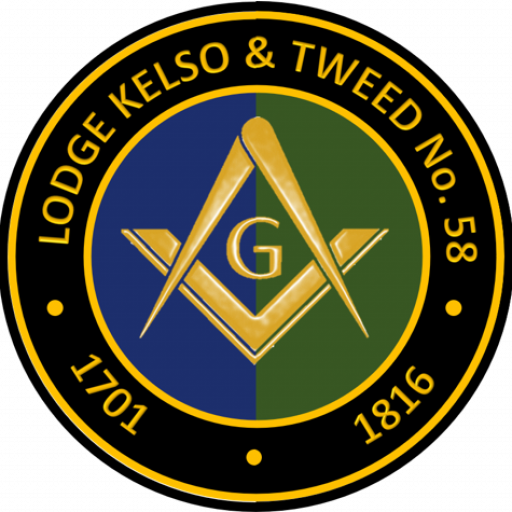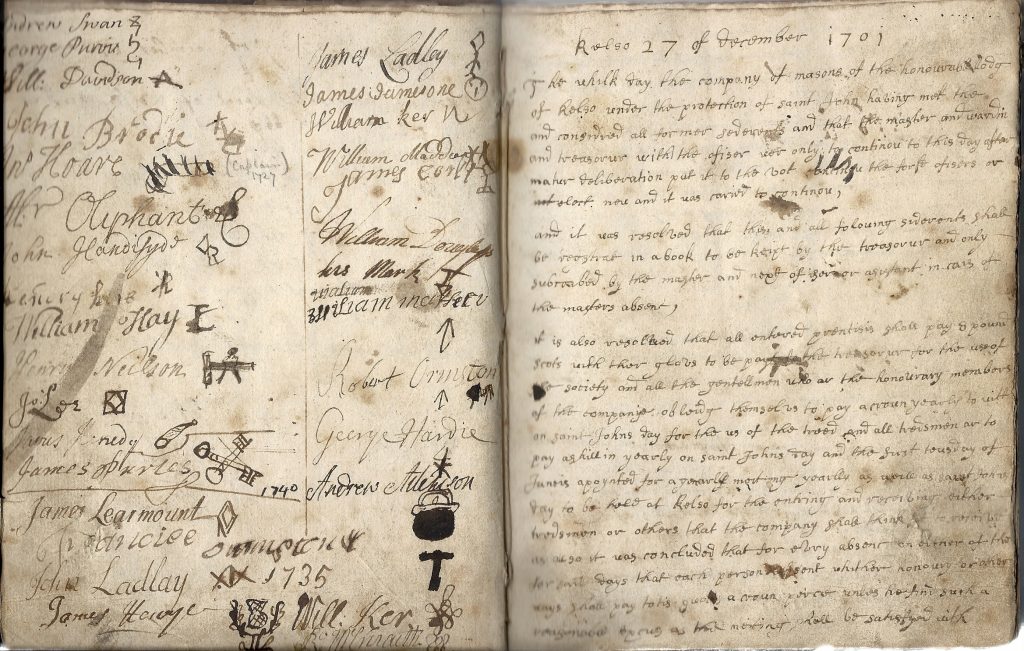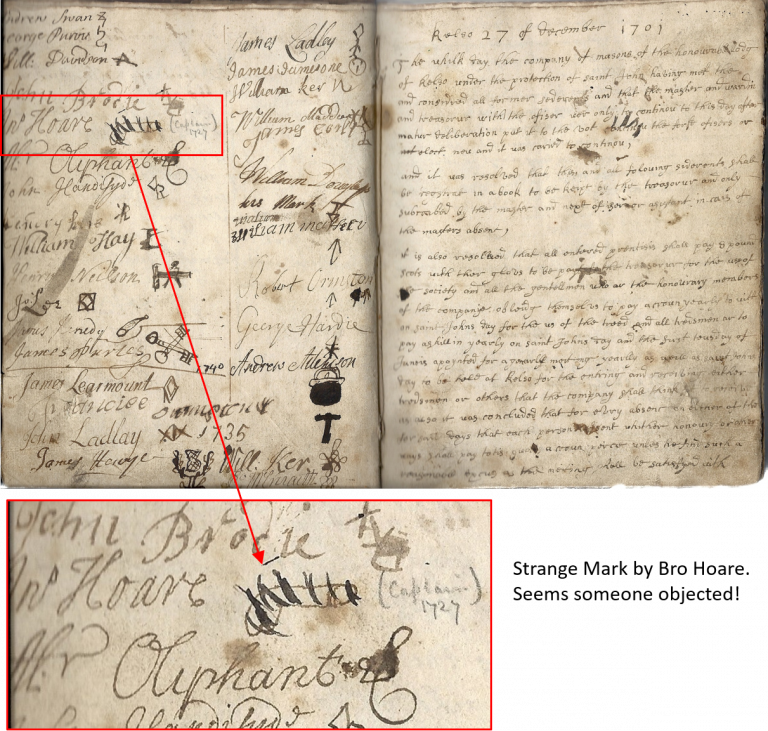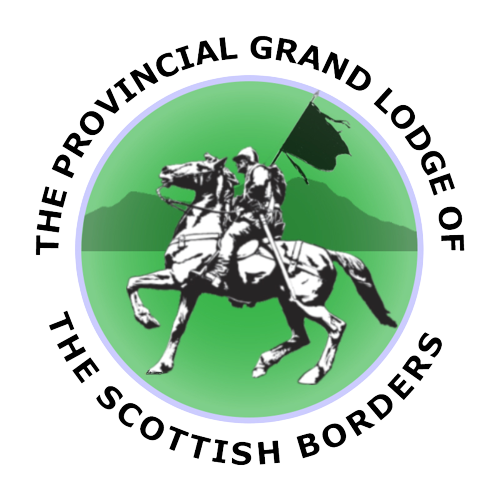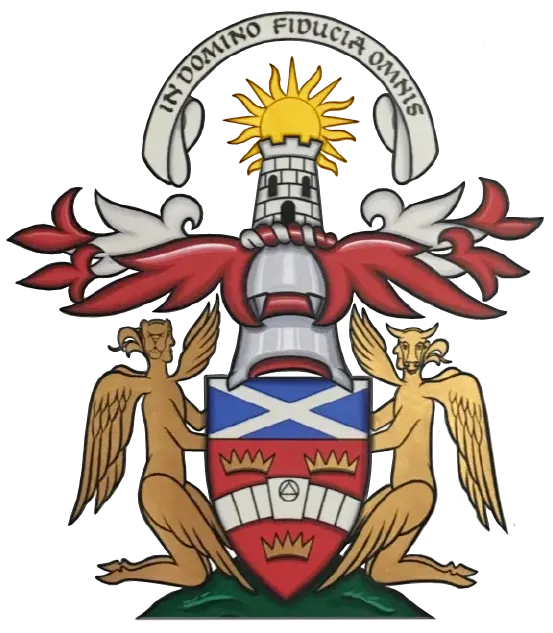“Kelso 27 of December 1701
The First Preserved Minute.
The whilk day the companie of the honourable Lodg of Kelso, under the protection of Saint John, having met there and considered all former sederents, and that the Master and Wardin and Treasurer, with the ofiser wer only to continou to this day. After matur deliberation, put it to the vot, continou the first ofisers, or elect nou, and it was carried to continou.
And it was resolved that this and all following sederents shall be registrat in a book to be kepit by the Treasurer, and only subscribed by the Master and next ofisor, or assistants, in case of the Master’s absens.
It was also resolved that all Enterd Prentises shall pay eight pounds Scots, with their glovs, to be paid to the Treaserur for the use of the society, and all the gentlemen who are the honorary members of the companie, obleidg themselves pay acrown yearly, to wit, on Saint John’s Day, and the first Tuesday of June is appointed for a yearly meeting. yearly as well as Saint John’s Day, to be held at Kelso, for the entering or recording either treedsmen or others that the companie shall think fit to record, as also it was concluded, that for every absent on either of the for said days, that each person absent, whether honorary or otherwise, shall pay a crown piece, unless he find such a reasonable excus as the meeting shall be satisfyd with, which is to be contained in the sederent of the day. The companie also resolved that when an entered prentis is registrat as Master or fellow of the Craft, that he must pay fyv shillins, with with new gloves, to the society. It was also resolved that fyns be received by the Treasorur as well as the other funds, which money, or pairt of it, is to be dispursed of the sight of the Master, Wardin, and Treasorur to indigent persons or other ocaisons in which the honour or interest of the company is concerned, they being aways answerable for their debursments to the next meeting, and amercirats [amerces] all the absents from this day’s meeting according to the said penaltis, of which absents the Treasurer is to present a list to the next meeting, himself being in the frontis peis of the roll. And it is furder concluded that all former fines are remitted to the discretion of the persons lyable for the entertainment of the company, and the society orders a fortie part to ther ofisors,which is not to be a precedent for others.”
Bro Vernon continues… “From the above minute it is clearly apparent that the Lodge had been in working order for some considerable time, as “all former fines” are spoken of; the existence of fines showing that in the working of the Lodge it had been found necessary to impose a penalty in certain cases for the better carrying out of the work.”
